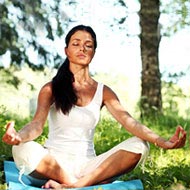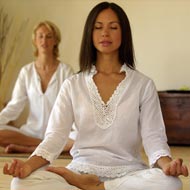What is Mindfulness Meditation?
Meditation is a form of exercise for the mind. In almost every culture there is some form of meditation or the other, although many people feel that meditation is an Eastern practice.
There are three basic ways to meditate.
- Mindfulness meditation is where the person has an open focus in that he/she can choose anything that he/she wants to focus on and then focus on it. This mainly involves focusing on the present. It is a very relaxing form of meditation and does not require too much of effort.
- Concentration meditation is almost the same as mindfulness, except that a person chooses some object on which he/she can focus his/her attention. This can be a rock, a candle, a book, or any other object.
- Moving meditation is when the person focuses on a particular movement such as when they walk or jog, and focuses their mind on the movement of the body.
In this article we will deal only with the first kind of meditation, which is mindfulness meditation.
What is mindfulness meditation?
Mindfulness meditation is something that helps us achieve a mind that is stable and calm. The idea is that by achieving calmness in our mind, we will be in harmony with the environment, resulting in peacefulness.
Additionally, if you are focusing on something and if another thought intrudes, there is no harsh pushing of this thought away from the mind. You calmly think to yourself that although this thought may be important you are right now focusing on something else and will take up this thought later on.
This may be difficult initially but over time will become easy. It will also give you a peaceful serenity that you cannot achieve in any other way.
How to do it?
The first thing that you should be aware of is your body posture. It is important that you choose a comfortable posture that will keep you erect because when you are not erect, the flow of energy in your body is interrupted.
Sit on a chair or on a cushion, the idea is to have the knees at a lower level than your pelvis. Keep your hands on your knees in a comfortable position. Sit erect, but comfortably, so that there is no strain or tension anywhere in your body. Imagine that someone has pulled your spine from above and allowed it to settle down. This will give you the right posture with your spine stacked up on one another.
There is no need for any physical exercise before doing this, although exercise is important because it will give you the strength to hold your posture for long durations. The idea is that exercise will help you achieve bodily strength, which will help you perform meditation that will help you achieve mental calmness.
Once you have achieved a comfortable position, look slightly down and try to focus your thoughts on something. You can place a rock in front of you and focus on it, or on some other object. A better way would be to try to focus on your breathing because it will also enable you to realize your own body.
You try to cut out as much of your sensory inputs as possible, and therefore, sit in a place where the amount of visual or auditory stimulation is as low as possible. Try to focus your thoughts along what you are trying to focus on. This will clear the mind and empty it. While this may seem like a bad thing, a clear mind is actually a harmonious mind and will energize you.
Do not try to resist any thoughts that intrude. The basic principle of mindfulness meditation is of non-resistance. You gently and calmly ask the thought to move aside for the present because you are doing something else. While this may be difficult initially, over time you will get adept at it.
What are the benefits of mindfulness meditation?
Meditation as such is done to strengthen the mind. Before trying to strengthen it, however, we need to ensure that it is clear, and this is what mindfulness meditation does for us. By clearing the mind and emptying it, you are then able to perform a number of mental exercises.
Read more articles from the Yoga Meditation (Dhyana) Category.

 Find Pose
Find Pose

